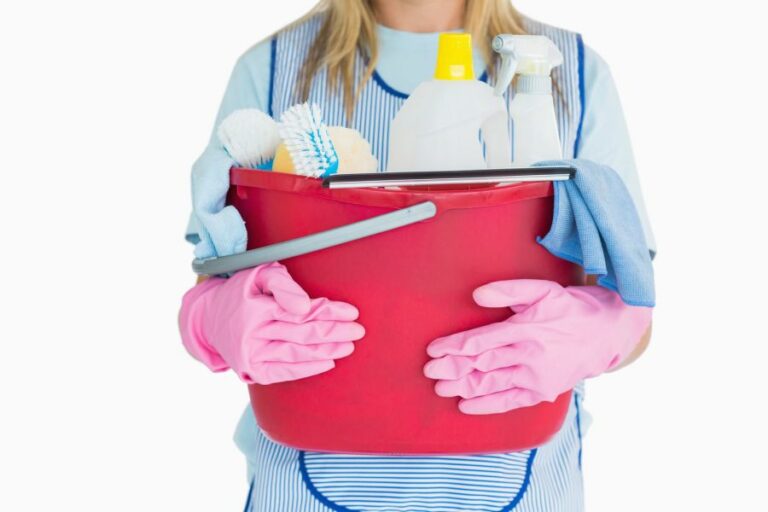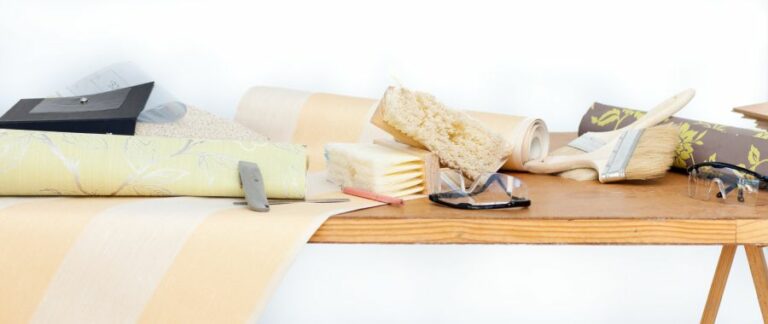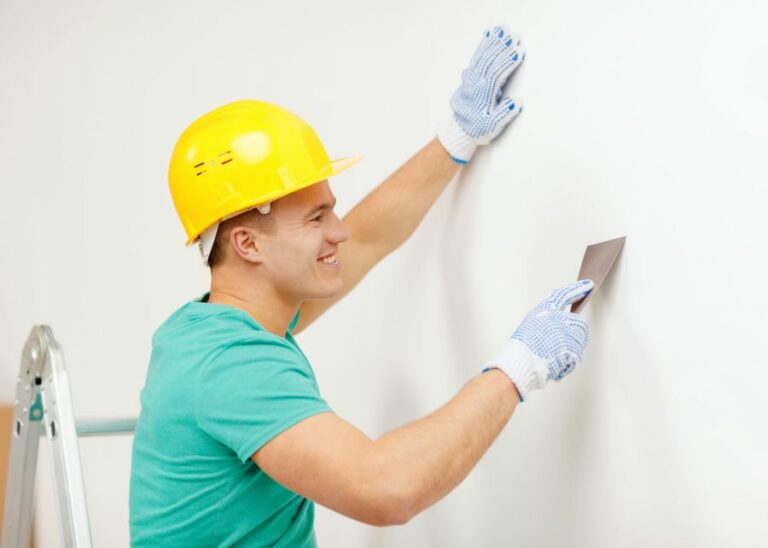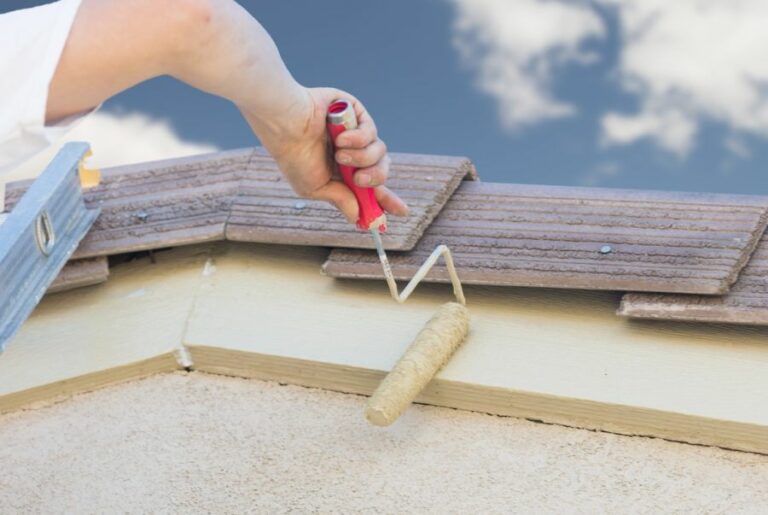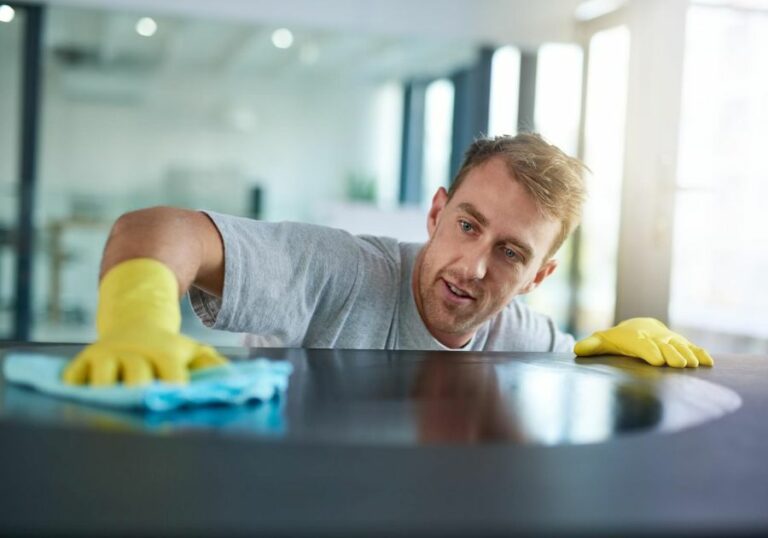How To Increase Paint Adhesion: Profiling Solutions
Are you struggling with enhancing the bonding capabilities of your paint? Look no further, as we have the perfect profiling solutions to increase paint adhesion and make your surfaces look impeccable! Our vast experience in paint technology has led us to develop some incredibly effective techniques that will solve your adhesion hurdles effortlessly.
How to increase paint adhesion: profiling solutions:
To increase paint adhesion, use profiling techniques such as sanding, abrasive blasting, or chemical stripping for surface preparation, depending on the material. Invest in quality tools and safety equipment, and ensure proper cleaning. Apply a compatible primer or sealer before painting for optimal adhesion and long-lasting results.

Discover innovative profiling solutions to maximize paint adhesion for durable, flawless finishes. Delve deeper into techniques that improve surface preparation, ensuring picture-perfect results every time. Don’t stop here. Read on to unlock the secret to longer-lasting, stunning paint jobs.
Contents
- 1 Enhancing Paint Adhesion: Profiling Techniques
- 2 Methods to Boost Paint Adhesion Effectiveness
- 3 Tools for Strengthening Adhesion Coating Bonds
- 4 Techniques to Amplify Surface Adhesion
- 5 Factors Leading to Paint Adhesion Test Failures
Enhancing Paint Adhesion: Profiling Techniques
Profiling in the painting industry refers to the process of preparing surfaces for improved paint adhesion. Increasing paint adhesion is essential for creating a long-lasting, durable, and high-quality finish.
• Importance of Surface Preparation
The key to successful paint application lies in the proper preparation of the surface. Without taking the necessary steps to ensure the surface is clean, dry, and free of contaminants, the paint may not adhere correctly or last as long as desired.
The most common problems experienced with poor paint adhesion include chipping, peeling, blistering, and delamination. To avoid these issues, it is essential to invest time and effort in thorough surface preparation.
• Manual Profiling Techniques
– Sanding
Sanding is one of the most basic and widely used techniques for improving paint adhesion. This method works by abrading the surface, which creates a rough texture for the paint to grip onto. For optimal results, use sandpapers with different grits, starting from the coarsest to the finest.
I recommend using 60 to 80-grit sandpaper for initial surface preparation and then moving on to 120 to 180-grit sandpaper for a smoother finish. After sanding, clean the surface thoroughly to remove any dust or debris.
– Abrasive Blasting
Abrasive blasting is another manual profiling technique in which an abrasive material is blasted at the surface to roughen and remove contaminants. Sandblasting, for instance, is a popular method for removing rust, paint, or old coatings.
Other media, such as glass beads or steel grits, can also be used depending on the surface and desired finish. Prior to abrasive blasting, remember to follow appropriate safety measures, including wearing protective gear.
– Chemical Stripping
Chemical stripping is a process that involves the use of a chemical agent to break down and remove paint, varnish, or other coatings. To use this method, the chemical stripper is applied to the surface and allowed to sit for a designated period before being removed.
Be sure to follow the manufacturer’s instructions and adhere to all safety precautions, like wearing gloves and working in a well-ventilated area. It is advisable to wash the stripped surface with water or a mild detergent to neutralize and remove any residual stripping agent.
• Mechanical Profiling Techniques
– Grinding
Grinding is a mechanical profiling method that uses a rotating abrasive wheel to remove material from the surface.
This method is particularly effective for leveling uneven surfaces, removing rust or paint, and creating a smooth, clean surface ideal for paint adhesion. Angle grinders and floor grinders are common tools used for this purpose.
– Scarifying
Scarifying is a more aggressive mechanical profiling method used for concrete and metal surfaces. It involves using a machine equipped with rotating cutter wheels or drums to remove the top layer of the substrate.
This technique is particularly useful for removing coatings, laitance, and other surface contaminants. The resulting profile provides an ideal surface for improved paint adhesion.
– Shot Blasting
Shot blasting is a fast and efficient method used primarily on steel and concrete surfaces. It involves propelling steel shots or abrasive materials at the surface to create a clean, textured profile that enhances paint adhesion.
Shot blasting effectively removes paint, rust, and other contaminants while retaining the original substrate.
• Surface Preparation Guidelines
The method and intensity of profiling depend on the surface material and the desired outcome. Here is a general guideline for common surface materials:
- Wood: Sanding or chemical stripping followed by thorough cleaning.
- Concrete: Abrasive blasting, grinding, or scarifying followed by vacuuming or pressure washing.
- Metal: Sanding, abrasive blasting, or chemical stripping, depending on the degree of rust or old coatings, followed by cleaning with a solvent or detergent.
• Ensuring Optimal Paint Adhesion
After proper profiling, it is essential to apply a compatible primer or sealer to the surface before painting. Primers and sealers play a crucial role in improving paint adhesion, enhancing paint coverage, and ensuring a durable finish.
Choose a primer specifically designed for the substrate material and the type of paint being used.
By investing time and effort in appropriate surface profiling techniques, you can improve paint adhesion and achieve excellent, long-lasting results.
Depending on the desired finish and material, choose the right profiling method, invest in high-quality preparation tools and safety equipment, and ensure proper cleaning and priming for optimal paint adhesion.
Solution | Description | Benefits |
|---|---|---|
Surface Cleaning | Remove all dirt, grease, oils, and other contaminants from the surface before painting. | Ensures a clean surface for better paint adhesion |
Abrasion | Use sandpaper, abrasive blasting, or other abrasion techniques to create a roughened surface texture. | Increases the surface area for improved paint adhesion |
Chemical Conversion Coating | Apply a chemical treatment, such as phosphating or chromating, to enhance paint adhesion and protect the substrate from corrosion. | Enhances paint adhesion and offers corrosion protection |
Primer | Apply a thin, uniform layer of primer specifically designed to enhance adhesion and fill in surface imperfections. | Improves paint adhesion, prevents paint absorption, and fills in surface imperfections |
Proper Curing and Drying | Allow adequate time for the paint to cure and dry, according to the manufacturer’s recommendations. | Ensures strong paint bonds and reduces the likelihood of failure or peeling |
Methods to Boost Paint Adhesion Effectiveness
Proper paint adhesion is an essential aspect of any painting project as it ensures the paint remains firmly bonded to the surface for a long-lasting, professional finish.
• Surface Preparation
The first and most important step to ensure optimal paint adhesion is thorough surface preparation. A clean, smooth, and properly prepared surface is the key to successful long-term adhesion.
– Cleaning the Surface
Dirt, oil, and other contaminants present on the surface can significantly hinder paint adhesion. It is crucial to clean the surface using a suitable cleaning agent like trisodium phosphate (TSP) or household detergents for mild cleaning.
Make sure to follow guidelines for proper dilution and application for best results. For more information, visit the Environmental Protection Agency (EPA) guidelines on Lead Paint Safety.
– Removing Loose Paint and Rust
Chipping, peeling, or flaking paint on the surface can lead to adhesion failure. Scrape off any loose paint using a paint scraper or wire brush. In addition, if there’s any rust present on the surface, removing it is essential. You can use rust converters or sand it down until the surface is free of rust.
– Sanding the Surface
Sanding creates a rough surface that promotes better adhesion of the paint. Use sandpaper with appropriate grit (typically 80 to 180 grit) for the material you are painting.
Sand the surface in a circular motion, ensuring an even texture. After sanding, remove dust and debris by wiping the surface with a damp cloth or tack cloth.
• Primer Selection
Using the right primer is another crucial factor in improving paint adhesion. A primer not only provides a uniform base for the paint but also binds and seals the surface, enhancing adhesion.
– Choose the Right Primer
Select a suitable primer based on the surface material, paint type, and application conditions. For example, oil-based primers work well on wood, and acrylic primers are suitable for drywall.
In addition, alkyd-based primers perform better for metal surfaces. Always consult the paint manufacturer’s recommendations when choosing a primer.
– Tint the Primer
Tinting the primer is an excellent strategy to improve the finish and reduce the number of topcoat layers required. Add a small amount of topcoat paint to the primer, aiming for a slightly lighter shade than the final color.
– Apply the Primer Correctly
Apply the primer uniformly, ensuring complete coverage. If necessary, apply additional coats to attain a consistent base. Let the primer dry completely, as per the manufacturer’s instructions, and sand the primer gently to improve adhesion further. Wipe off the dust after sanding it with a tack cloth.
• Proper Application Technique
Good application technique can go a long way in ensuring optimum paint adhesion.
– Temperature and Humidity
Ideal environmental conditions are crucial for proper paint adhesion. Paint and primer applications should be avoided during extreme temperatures or high humidity conditions.
It is especially relevant for water-based paints, as a higher humidity level may delay the drying process, leading to adhesion issues. Follow the paint manufacturer’s recommendations for ideal temperature and humidity ranges.
– Application Methods
Using an appropriate application method, such as brush, roller, or spray, also impacts paint adhesion. Each method has its advantages and disadvantages, and selecting the appropriate one depends on the specific project, surface material, and paint type.
In general, a high-quality brush or roller, or a well-maintained spray gun, will provide better adhesion and finish.
– Apply Multiple, Thin Coats
Applying multiple, thin coats of paint, as opposed to a single, thick coat, leads to better adhesion, proper curing, and a more even finish.
Allow each coat to dry according to the manufacturer’s instructions before applying the next one. This allows the paint to bond better, creating a more durable adhesion.
• Conclusion
In conclusion, improving paint adhesion is an important aspect of painting projects that should not be overlooked. Proper surface preparation, careful primer selection, and appropriate application techniques all contribute to achieving excellent adhesion and a professional, long-lasting finish.
Follow these best practices and guidelines to ensure the success of your painting projects.
Tools for Strengthening Adhesion Coating Bonds
Adhesion coating is an essential aspect of many industries, from automotive and aerospace to construction and electronics. Ensuring strong and durable bonds between different materials is vital for the overall performance and longevity of a product.
• Surface Preparation Techniques
Proper surface preparation is paramount for achieving strong adhesion. These techniques aim to increase the surface area, enhance chemical compatibility, and remove contaminants that could interfere with bonding.
– Abrasive Blasting
Abrasive blasting, also known as sandblasting, is a process that uses a high-pressure stream of abrasive material to clean and roughen the surface.
This technique is effective in increasing the surface area and removing contaminants, which helps create a stronger bond. Common materials used for abrasive blasting include:
- Sand
- Steel grit
- Crushed glass
- Walnut shells
- Baking soda
– Chemical Etching
Chemical etching involves using chemical solutions to modify the surface of a material selectively. This process can help increase the surface area, enhance chemical compatibility, and remove contaminants. There are various types of chemical etching, including:
- Acid etching
- Alkaline etching
- Anodizing
- Chromate conversion coating
– Plasma Treatment
Plasma treatment uses ionized gas, or plasma, to modify the surface of a material. This process can help increase the surface energy, providing a better bonding surface for adhesion coating. There are various types of plasma treatment, including:
- Atmospheric pressure plasma
- Low-pressure plasma
- Corona treatment
• Adhesion Promoting Materials
Adhesion promoters, also known as coupling agents or primers, are used to increase the adhesion between two surfaces. They improve the wetting of the adhesive to the substrate and promote chemical bonding, resulting in a stronger bond.
– Silanes
Silanes are versatile adhesion promoters that can be used with a wide range of materials, including metals, glass, and plastics. They work by forming covalent bonds with the surface of the material, which enhances the adhesion of the coating. Some commonly used silanes include:
- Aminosilanes
- Epoxy silanes
- Methacryloxy silanes
– Organotitanates
Organotitanates are another type of adhesion promoter that can be applied to various materials, including metals, glass, and ceramics. They work by chemically bonding with the surface, imparting a stronger bond between the coating and the substrate.
– Surface Treated Pigments
In the industry of paints and coatings, surface-treated pigments are used to improve the adhesion of the coating to the substrate. When added to the coating formulation, these pigments form a chemical bridge between the binder in the paint and the surface it is applied to.
• Application Techniques
The proper application of adhesion coatings is essential for achieving strong bonds. There are several techniques to ensure an even distribution of the coating onto the desired surface:
– Spray Coating
Spray coating is a popular technique used for applying adhesion coatings. This method is versatile, as it can produce a fine or thick coating, depending on the spray equipment and the material used.
It is also an effective technique for applying a uniform layer of adhesion-promoting materials on complex surfaces.
– Roll Coating
Roll coating involves using a roller or a similar tool to apply the adhesion coating onto the surface. This technique is advantageous when working with large, flat surfaces, as it is efficient and delivers an even coat.
– Brush Coating
Brush coating is a simple and cost-effective method for smaller applications or when precision is required. Care should be taken to ensure an even and consistent application, as brush marks can lead to weaker bonds in specific areas.
– Dip Coating
Dip coating involves immersing the substrate into a container filled with the adhesion-promoting material. This technique is suitable for coating complex shapes but may require additional steps such as air drying or curing to set the coating.
In conclusion, there are various techniques and materials available for improving adhesion coating: proper surface preparation, adhesion-promoting materials, and proper application techniques.
By utilizing these methods in combination, manufacturers can achieve strong and durable bonds between materials, ensuring the longevity and performance of their products.
Always consider the specific requirements and intended use of the final product when selecting the most suitable approach for improving adhesion coating.
Techniques to Amplify Surface Adhesion
• Understanding Surface Adhesion
Surface adhesion refers to the ability of different materials or coatings to stick together.
From day-to-day applications like sticking tape on a wall to more complex industrial processes, increasing surface adhesion is a crucial aspect of numerous industries, including automobiles, electronics, construction, and more.
To improve surface adhesion effectively, it is vital to understand the factors that influence it, including surface chemistry, surface energy, and surface roughness.
– Surface Chemistry
The chemistry of a surface plays a crucial role in determining the strength of adhesion. To increase adhesion, both the surface and the adhesive material should chemically interact with each other.
When their molecules form strong bonds or high intermolecular forces, they achieve a secure bond. Hence, selecting an adhesive material with optimum chemical characteristics for the surface in question is essential.
– Surface Energy
Surface energy is another essential factor affecting adhesion. High surface energy materials are generally better for adhesion because they can create a stronger bond with the adhesive.
To overcome the challenges of bonding low surface energy materials, you can use specialized adhesives or improve the surface energy by employing various surface treatments.
– Surface Roughness
Surface roughness is related to the physical texture of a surface. In general, creating a rough surface improves adhesion, as it allows the adhesive material to form a mechanical interlocking with the surface, making the bond stronger.
Mechanical abrasion, chemical etching, and plasma treatments are some methods used to achieve a rougher surface and promote adhesion.
• Techniques to Increase Surface Adhesion
There are several techniques available to enhance surface adhesion. Some popular methods include mechanical abrasion, chemical etching, and surface treatments using plasma, heat, or ultraviolet (UV) radiation.
Each technique has its benefits and drawbacks, which should be considered to determine the most suitable method for your application.
– Mechanical Abrasion
Mechanical abrasion is a straightforward method to increase surface adhesion by physically altering the surface roughness. Common methods include sanding, grit blasting, and using abrasive brushes.
While effective in creating a rough texture, mechanical abrasion may not always provide uniform surface roughness and may cause damage to delicate, thin, or brittle materials.
– Chemical Etching
Chemical etching is the process of using chemicals to selectively remove material from a surface, thereby increasing its roughness. This technique can produce a controlled and uniform surface profile.
Some disadvantages of chemical etching include its environmental impact from hazardous waste disposal and the effects on the intrinsic properties of the material. Thus, proper care and considerations must be taken when employing chemical etching methods.
– Plasma Treatment
Plasma treatment modifies surface chemistry and energy by exposing the surface to reactive gas plasma. This method can effectively increase adhesion on most materials, including metals, plastics, and glass.
Plasma treatment is fast, eco-friendly, and can be used on various material types without causing physical damage. However, it may also require specific equipment and expertise, making it potentially more expensive than other methods.
– Heat and Ultraviolet (UV) Treatments
Heat and UV treatments can increase adhesion by changing the material’s surface chemistry, energy, and roughness. Both methods are non-toxic and can achieve uniform surface modification.
However, they may not be suitable for heat-sensitive materials and materials that are unaffected by the UV wavelengths used in the process.
• Tips on Choosing the Best Adhesion Method
With various methods available to increase surface adhesion, it can be overwhelming to choose the most suitable technique for your project. From my experience, the following points can help you make an informed decision:
- Evaluate your material: Assess the surface properties, such as material type, surface energy, and roughness, to determine which method would work best.
- Consider the application: Determine the required bond strength for your application and choose a method that can achieve that level of adhesion.
- Assess the equipment and expertise: Determine whether you have the required equipment and expertise to perform the chosen adhesion technique. If not, consider outsourcing or selecting a different method that fits your capacity.
- Consider environmental and safety factors: Select a technique that aligns with environmentally sustainable practices and adheres to safety guidelines and regulations.
In conclusion, increasing surface adhesion involves modifying surface chemistry, energy, and roughness. Various methods, such as mechanical abrasion, chemical etching, plasma treatment, and heat or UV treatments, can be employed to achieve the desired level of adhesion.
Understanding your material and the specific requirements of your application are essential factors in choosing the best technique for your project.
By adhering to environmental and safety standards, you can guarantee a successful and responsible application of your chosen adhesion method.
Method | Description |
|---|---|
Clean surfaces | Remove dirt, dust, and contaminants from both surfaces to improve contact. |
Roughen surfaces | Create a rougher texture by sanding, etching, or using abrasives to increase surface area and adhesion. |
Use adhesion promoters | Apply chemical primers or surface activation treatments to enhance bonding capabilities. |
Optimize adhesive selection | Choose the right type of adhesive that is compatible with the materials involved and fulfills the specific requirements of your application. |
Control temperature and humidity | Ensure optimal environmental conditions during adhesive application and curing to prevent interference with the bonding process. |
Factors Leading to Paint Adhesion Test Failures
• Introduction
In the world of painting, achieving proper adhesion between the paint and the substrate is essential for a long lasting and visually appealing result. However, paint adhesion tests can sometimes fail, pointing out underlying issues with the painting process or materials.
• Surface Preparation
– Contamination
One of the primary reasons for paint adhesion test failure is poor surface preparation, leading to contaminations. Dirt, dust, grease, and oil are some common contaminants affecting paint adhesion. These contaminants hinder the paint’s ability to bond with the substrate properly.
Recommendation: Thoroughly clean the surface using appropriate cleaning agents before painting. For oily surfaces, use a degreaser to remove any grease or oil buildup. In case of dust and dirt, use a tack cloth or a moist cloth for cleaning.
– Loose or Flaking Paint
If the surface already has a layer of old, loose, or flaking paint, applying a fresh coat of paint will lead to weak adhesion. As a result, the new paint layer might not adhere properly, causing the adhesion test to fail.
Recommendation: Remove any loose or flaking paint by sanding, scraping, or using a paint stripper. After removing the old paint, make sure to clean the surface again to remove any dust or debris.
– Inadequate Surface Profile
Surfaces that are too smooth or glossy can also lead to poor paint adhesion. A suitable surface profile is necessary for paints to anchor correctly.
Recommendation: Sand the surface lightly to create a good surface profile. In the case of metal substrates, acid etching or abrasive blasting might also be necessary to achieve the proper surface profile.
• Paint and Coating Issues
– Incorrect Paint Selection
Using the wrong paint for a specific substrate can result in adhesion failure. For example, a paint formulated for metal surfaces may not adhere well to a wooden surface.
Recommendation: Ensure to choose the correct paint specifically designed for the substrate. Consult the paint manufacturer’s guidelines or seek expert advice if unsure.
– Incompatibility between Primer and Paint
Sometimes, the primer and paint are incompatible, leading to poor adhesion between the two layers. Some paints require a specific primer to ensure effective adhesion.
Recommendation: Always use a primer and paint from the same manufacturer, or ensure that the chosen primer is compatible with the selected paint. If unsure, conduct a small adhesion test before proceeding with the entire surface.
– Poor Paint Mixing
Improper mixing of paints can lead to a heterogeneous mixture, causing uneven application and weak adhesion.
Recommendation: Thoroughly mix the paint using a paint mixer or stirrer, ensuring all the components are uniformly distributed. Follow the manufacturer’s guidelines for proper mixing times and techniques.
• Environmental Factors
– Temperature and Humidity
Environmental factors like temperature and humidity can significantly impact paint adhesion. High humidity can delay paint drying, leading to weak adhesion, whereas low temperatures can cause the paint to thicken, reducing its bonding ability.
Recommendation: Paint under ideal temperature and humidity conditions as recommended by the paint manufacturer. In general, painting should be avoided during extremely high or low temperatures and excessively humid conditions.
– Wet Surfaces
Painting on wet or damp surfaces can result in improper adhesion and premature paint failure.
Recommendation: Ensure the surface is completely dry before painting. Use moisture detection meters, if necessary, to check the moisture content of the substrate.
• Application Techniques
– Insufficient Film Thickness
Applying paint too thinly can lead to weak adhesion, as the paint might not have enough volume to bond with the substrate.
Recommendation: Apply the recommended number of paint coats to achieve the minimum dry film thickness as suggested by the paint manufacturer.
– Over-application
Conversely, applying paint too thickly can also cause adhesion issues, as the paint may not dry uniformly, leading to trapped solvents and improper bonding.
Recommendation: Use the correct application technique and tools, and follow the paint manufacturer’s guidelines for the recommended wet and dry film thickness.
• Conclusion
Understanding and addressing the factors causing paint adhesion failures are crucial in achieving a long-lasting and visually appealing paint job.
By paying attention to surface preparation, paint selection, environmental factors, and application techniques, you can significantly reduce the risk of paint adhesion test failures.
Cause | Description |
|---|---|
Improper Surface Preparation | Failure to properly clean, sand, or prime the surface before painting can lead to poor adhesion and eventual failure of the paint. |
Incompatible Paint Types | Applying a paint type that is not compatible with the underlying material or previous paint layers can cause adhesion failure. |
Insufficient Drying Time | Not allowing adequate drying time between coats or before applying a topcoat can result in the paint not adhering properly. |
Extreme Temperature or Humidity | Painting in extreme temperatures (high or low) or high humidity levels can cause the paint to not adhere properly, leading to peeling or blistering. |
Use of Poor Quality Paint | Using low-quality paint can result in paint adhesion failure, as these paints may not have the necessary binders and additives to adhere properly to the surface. |

